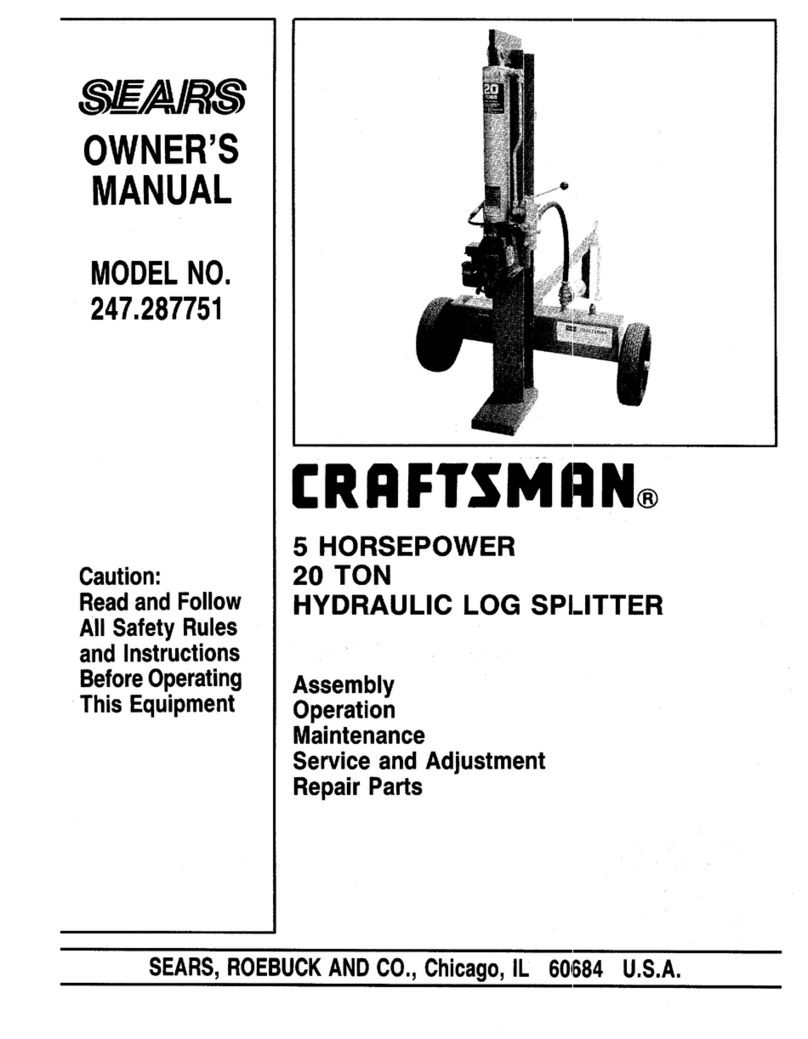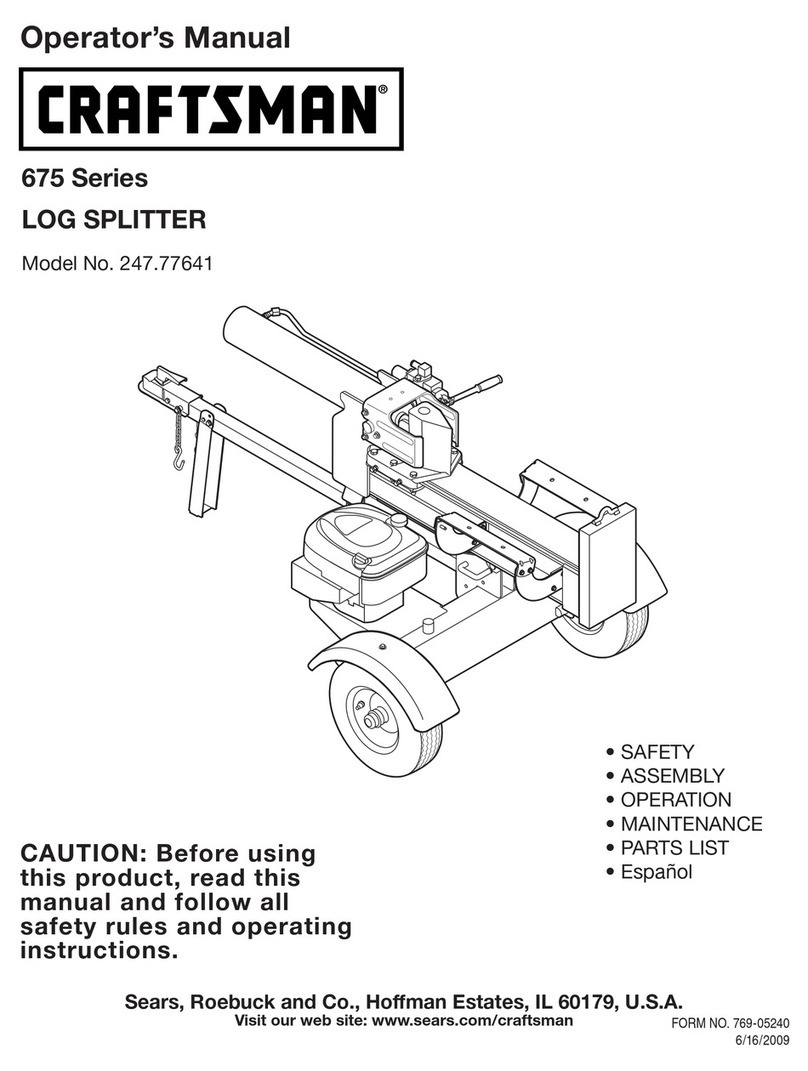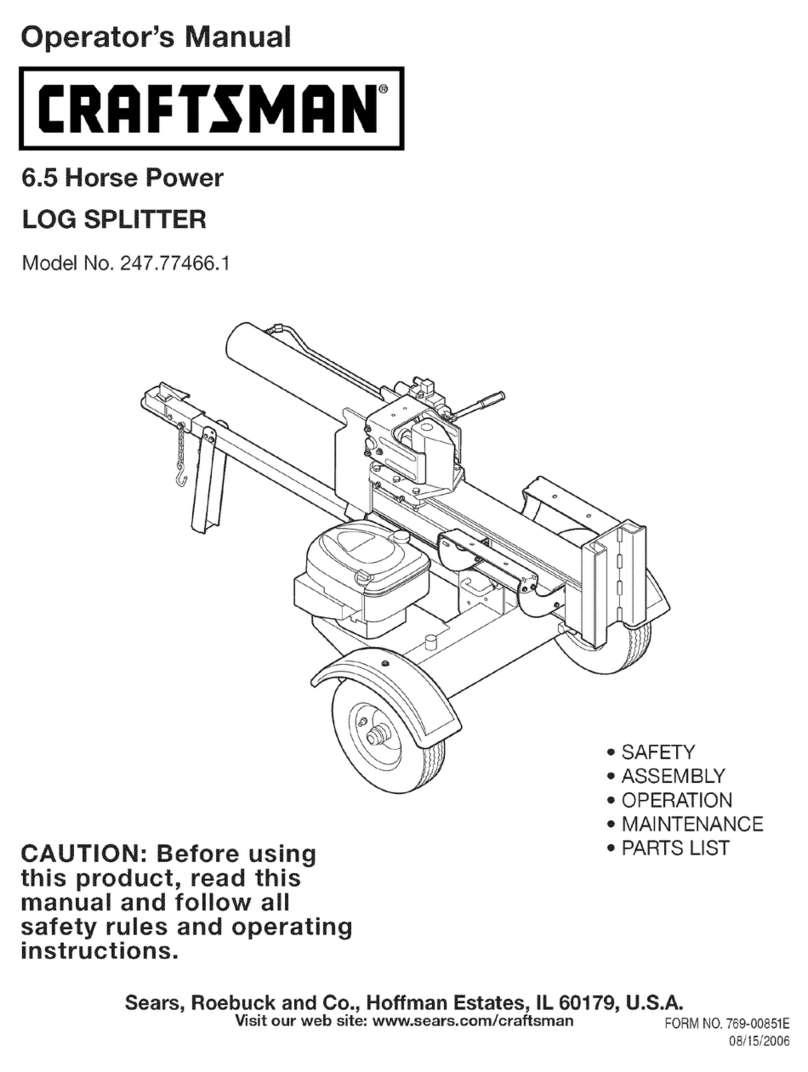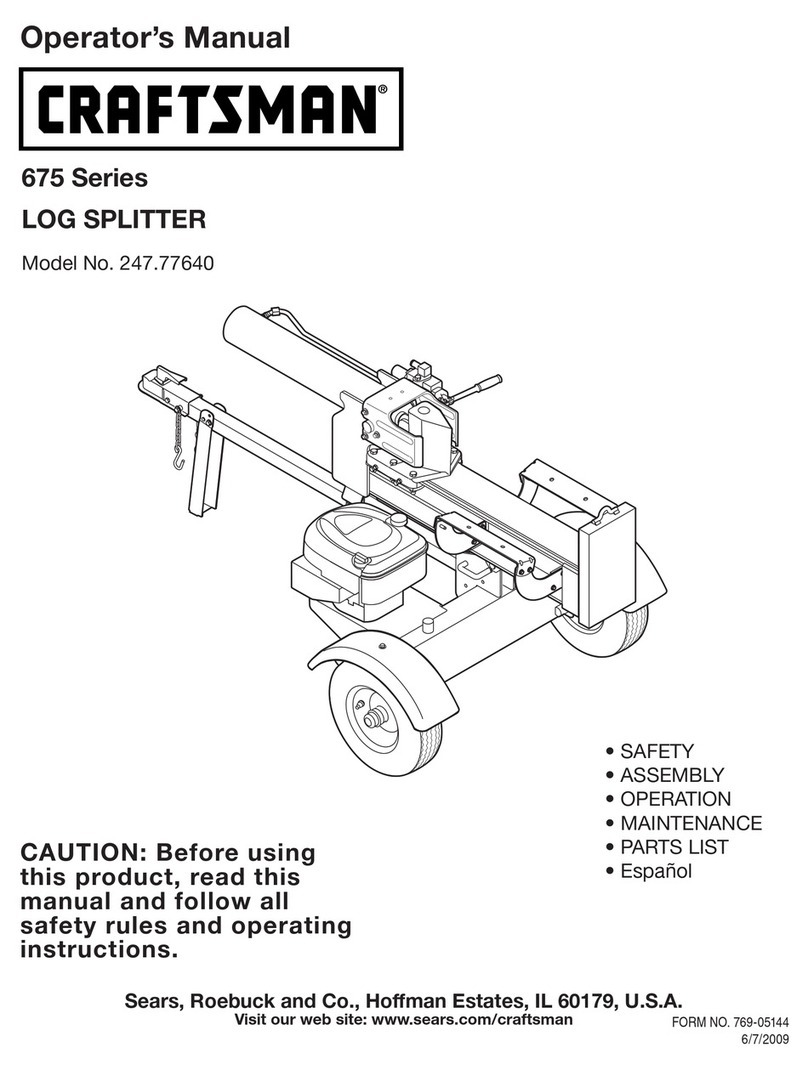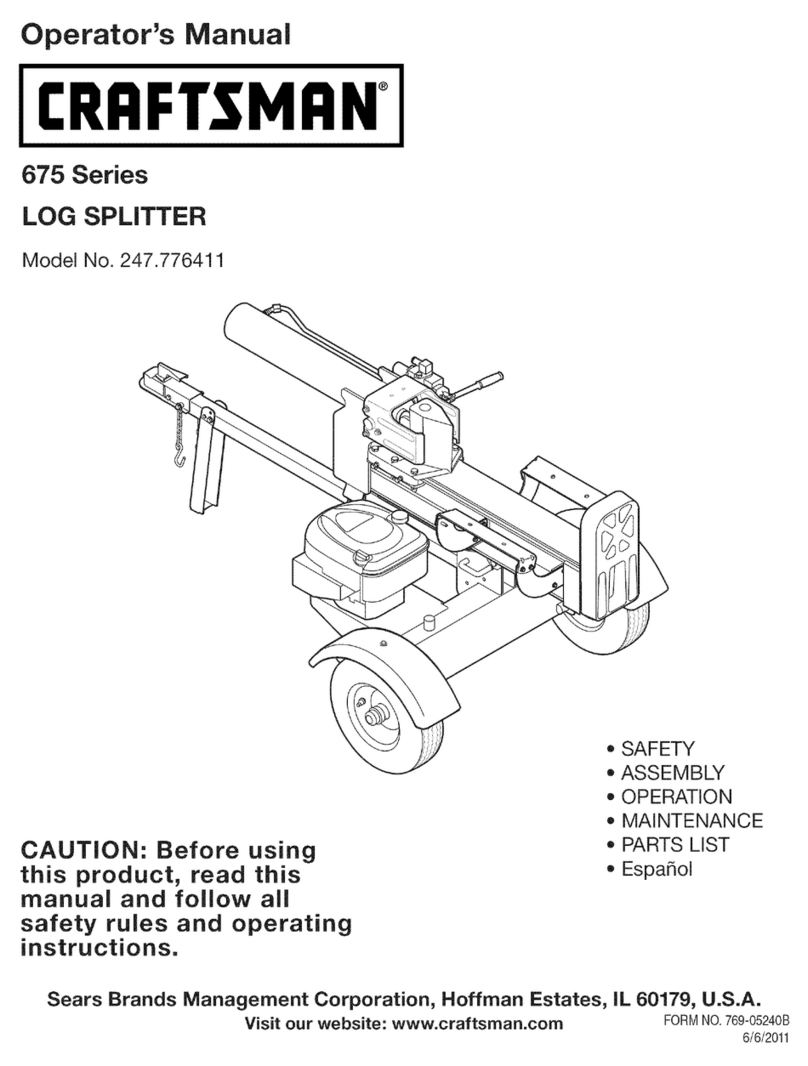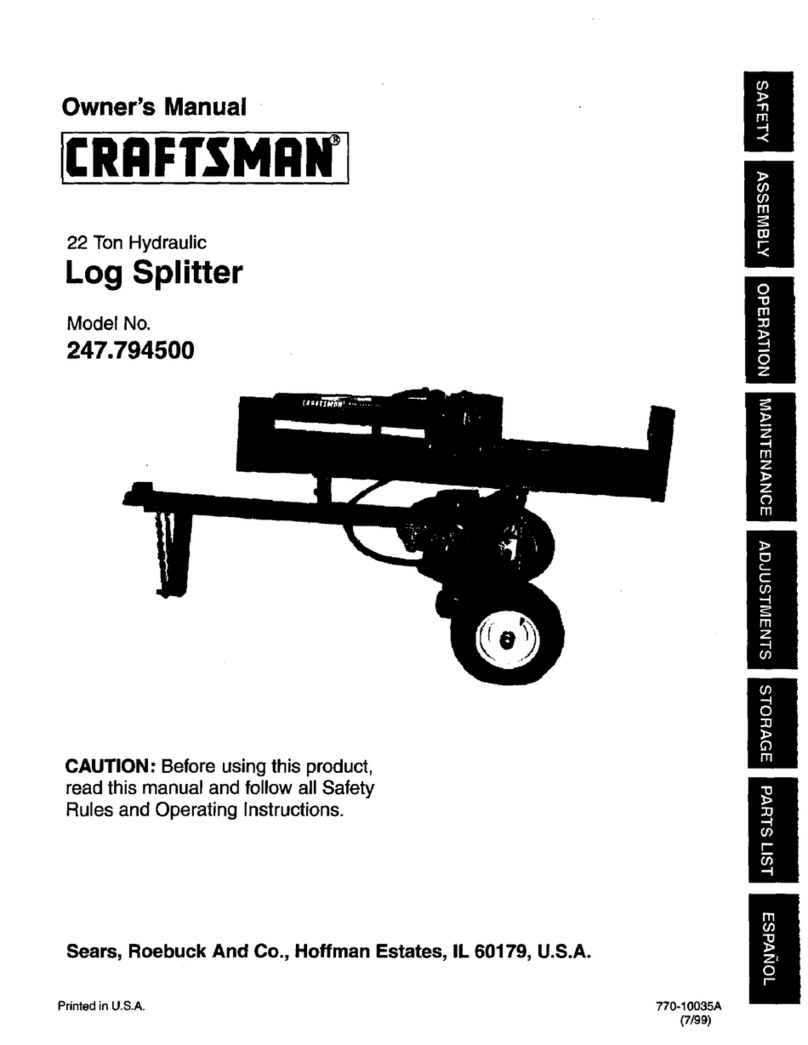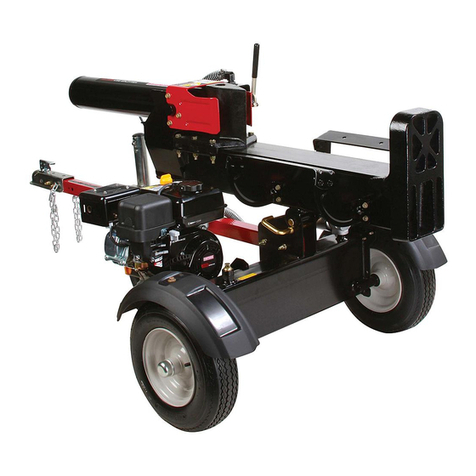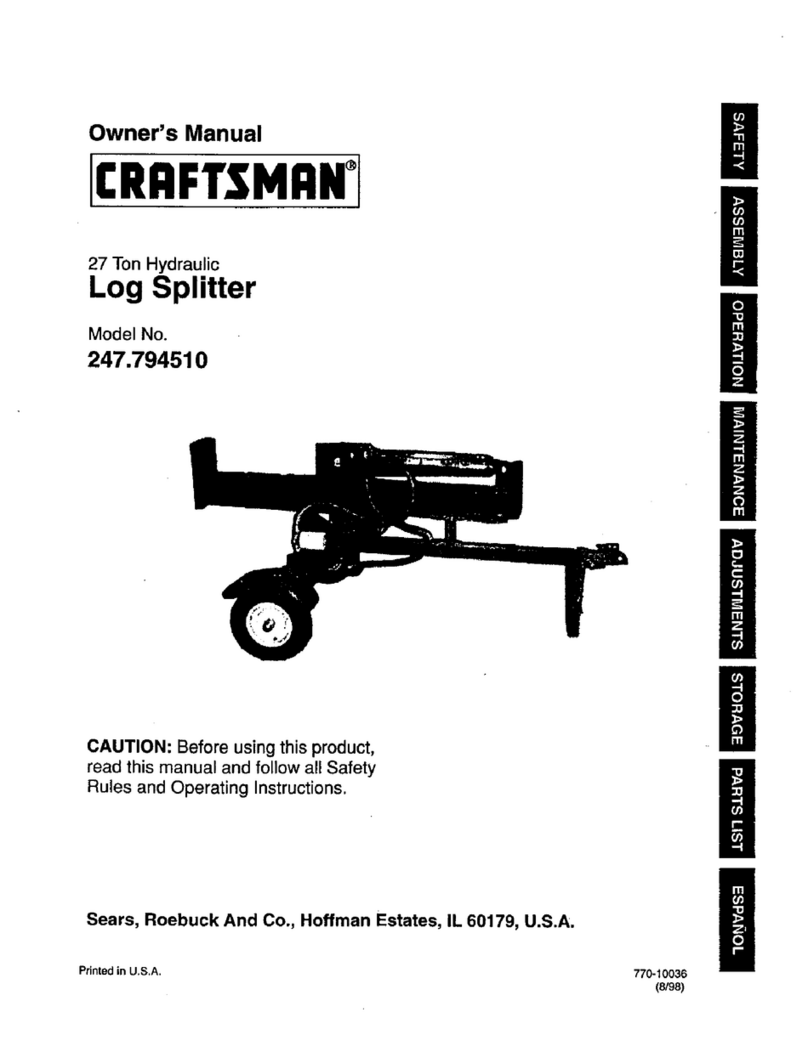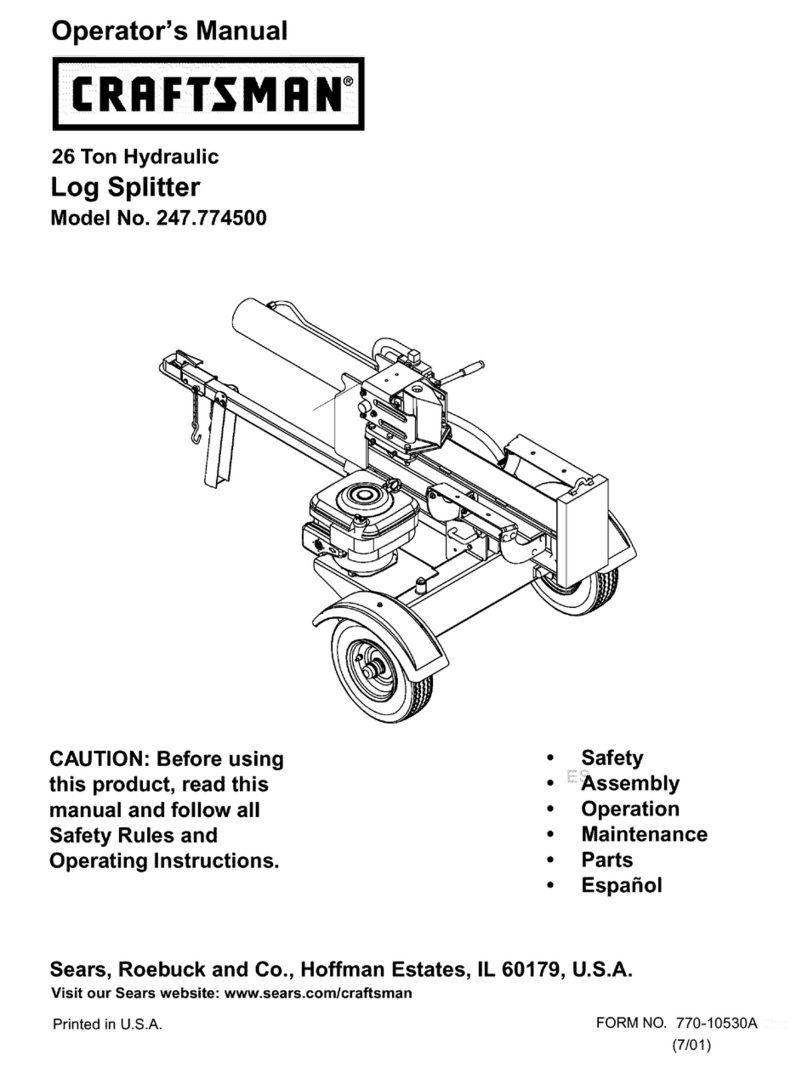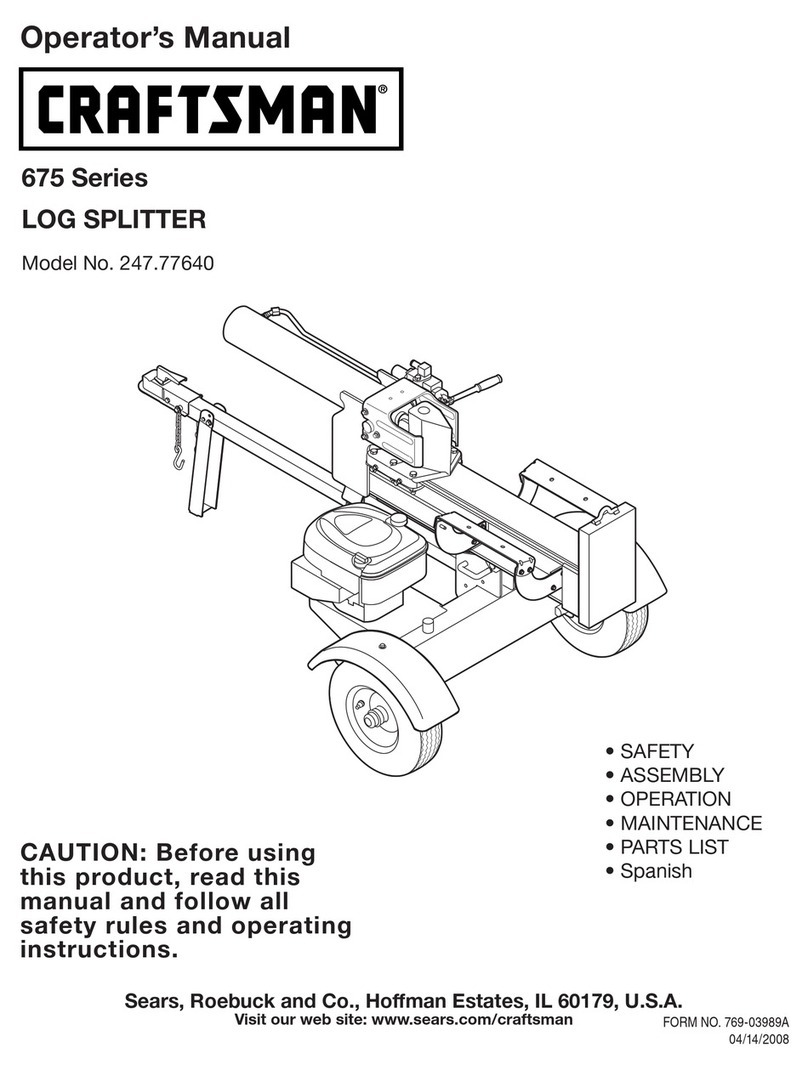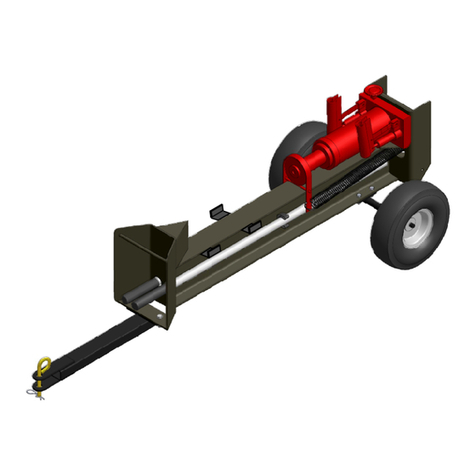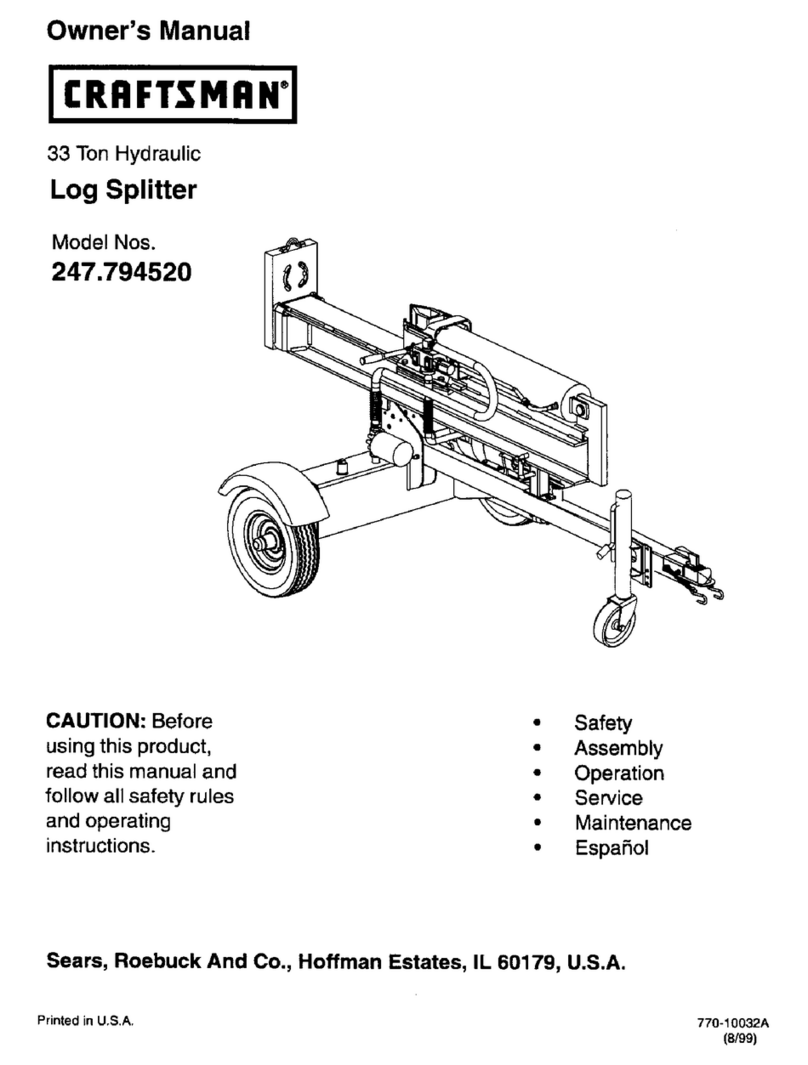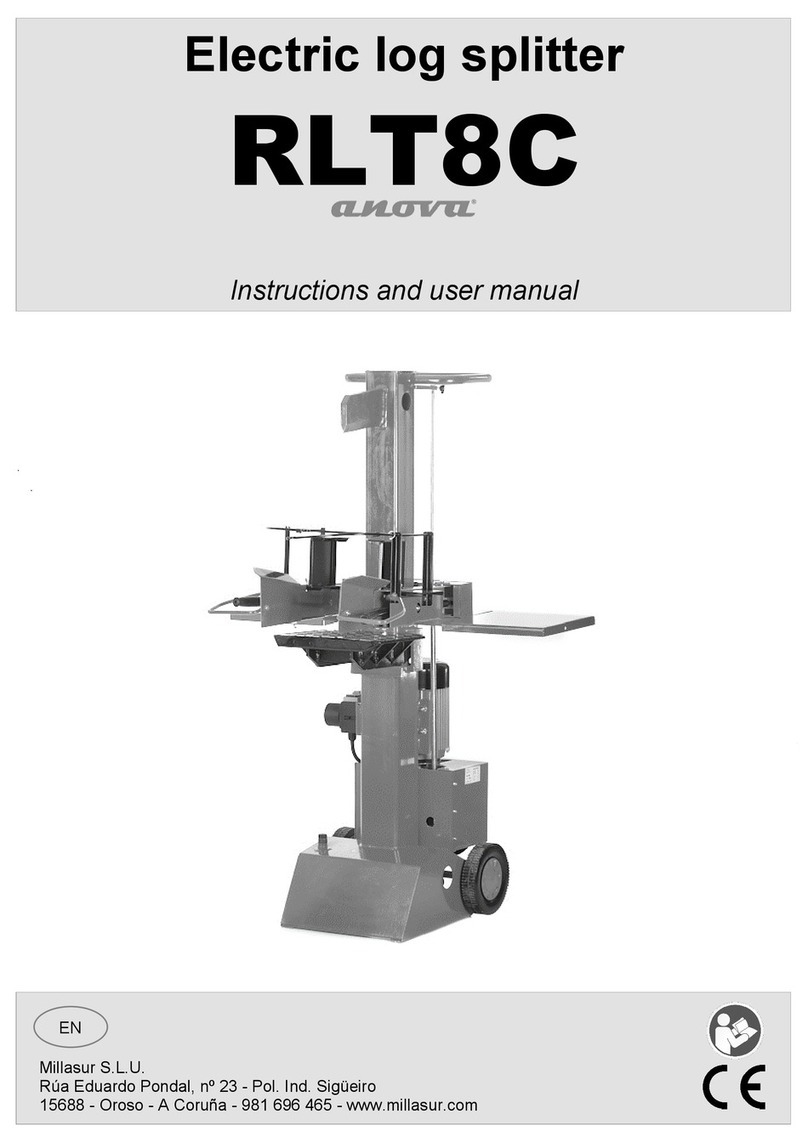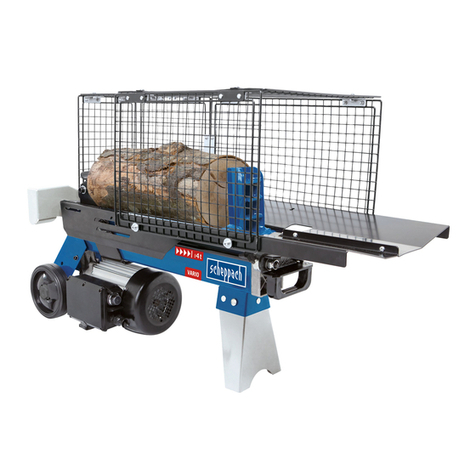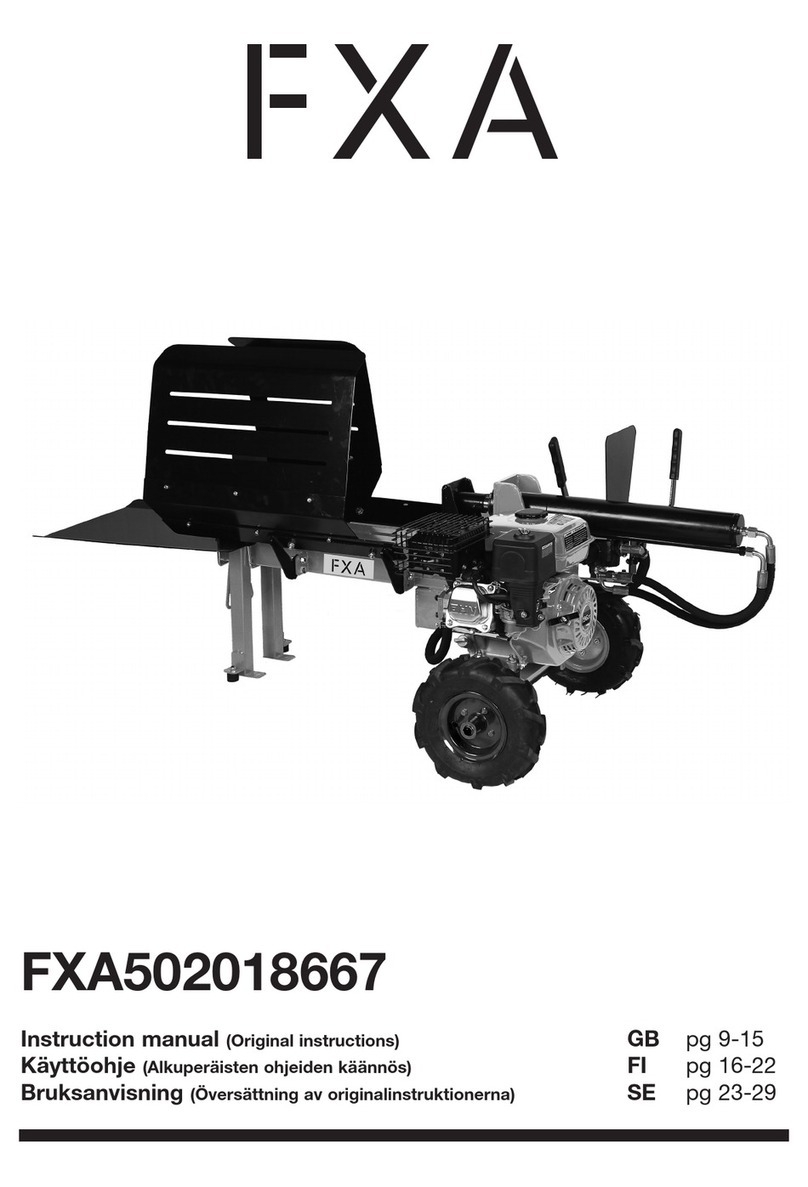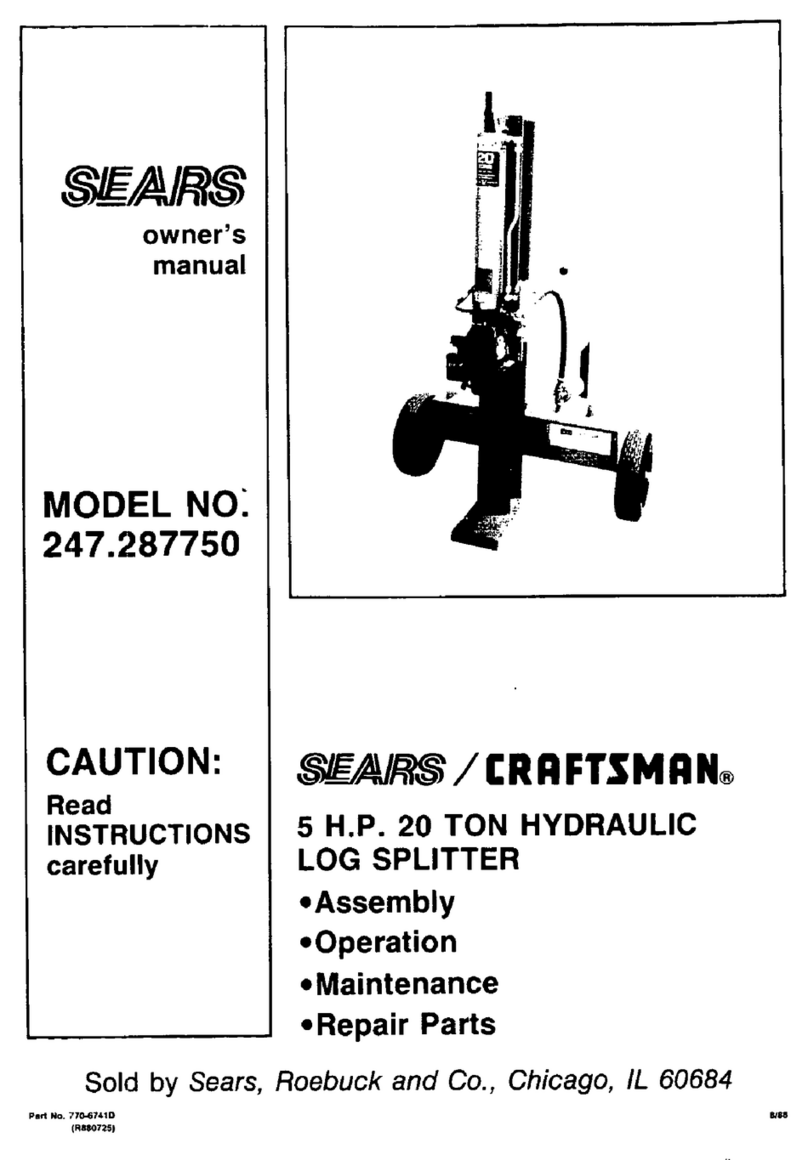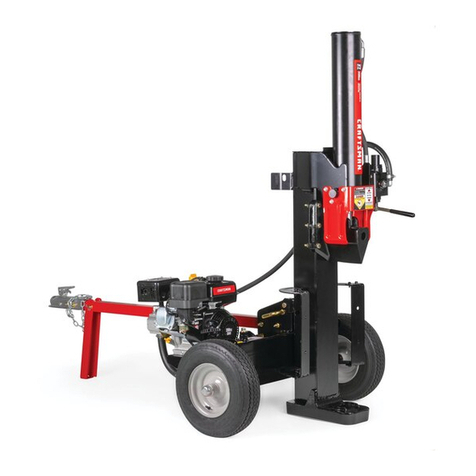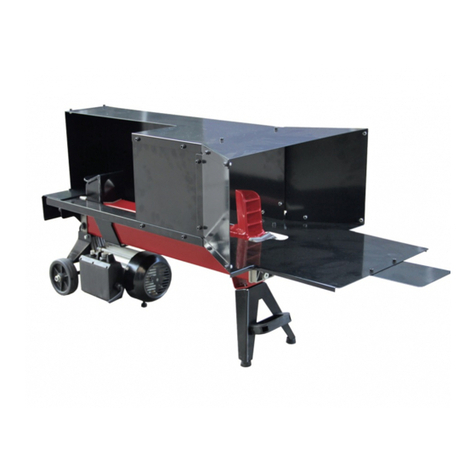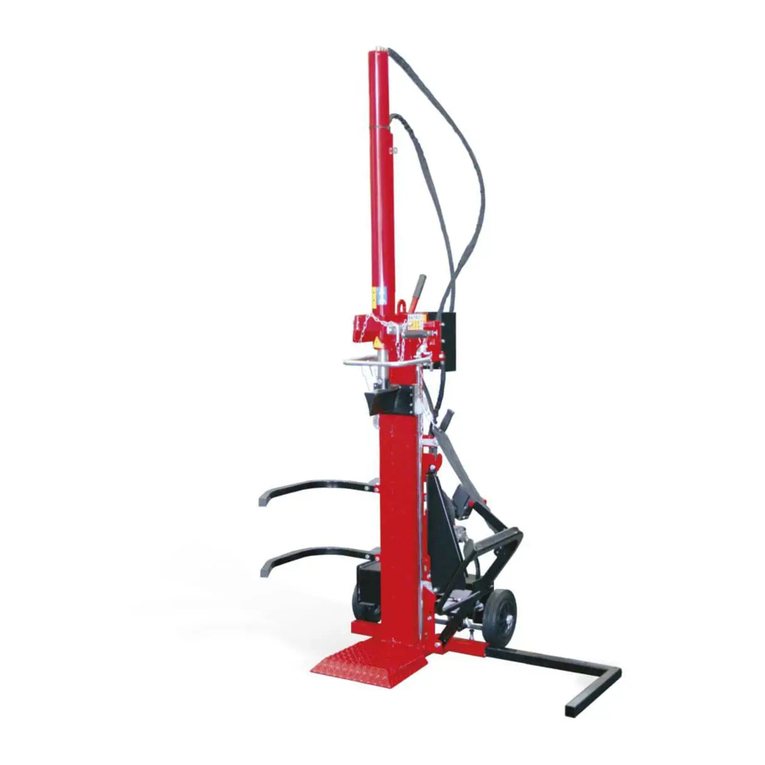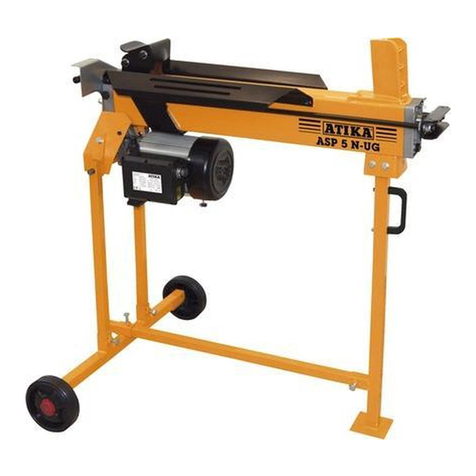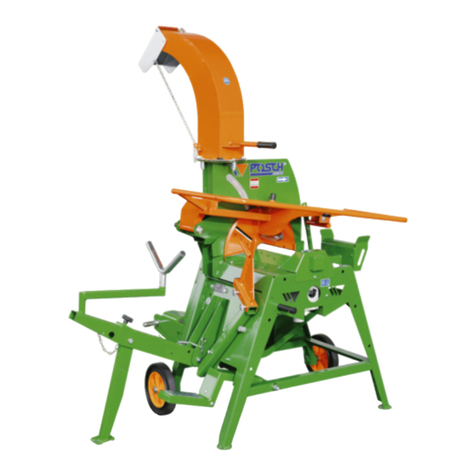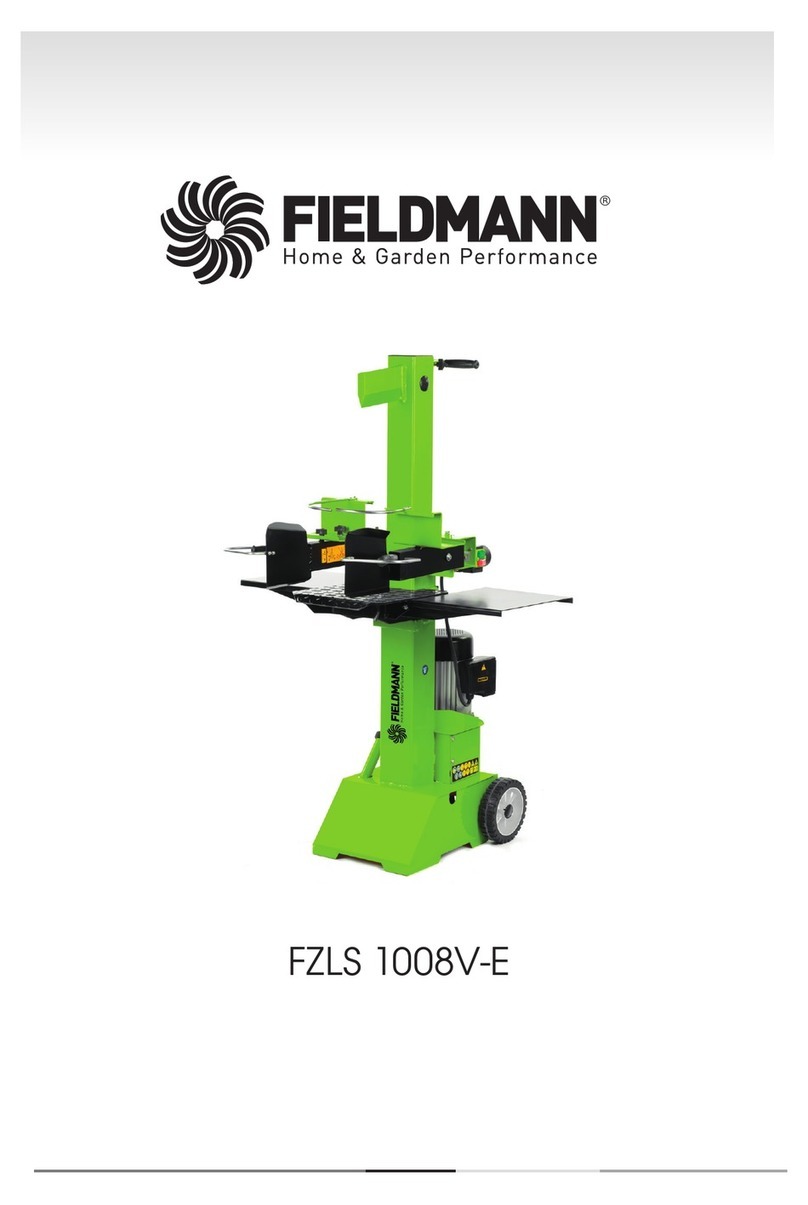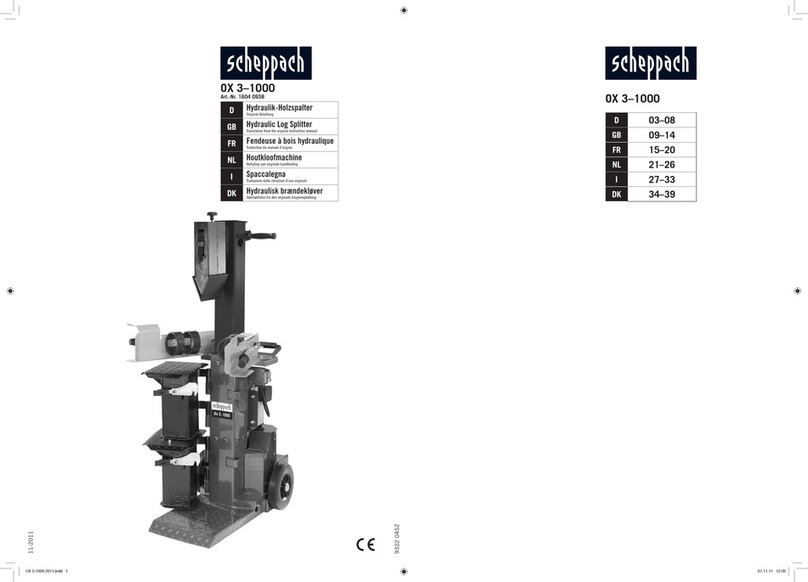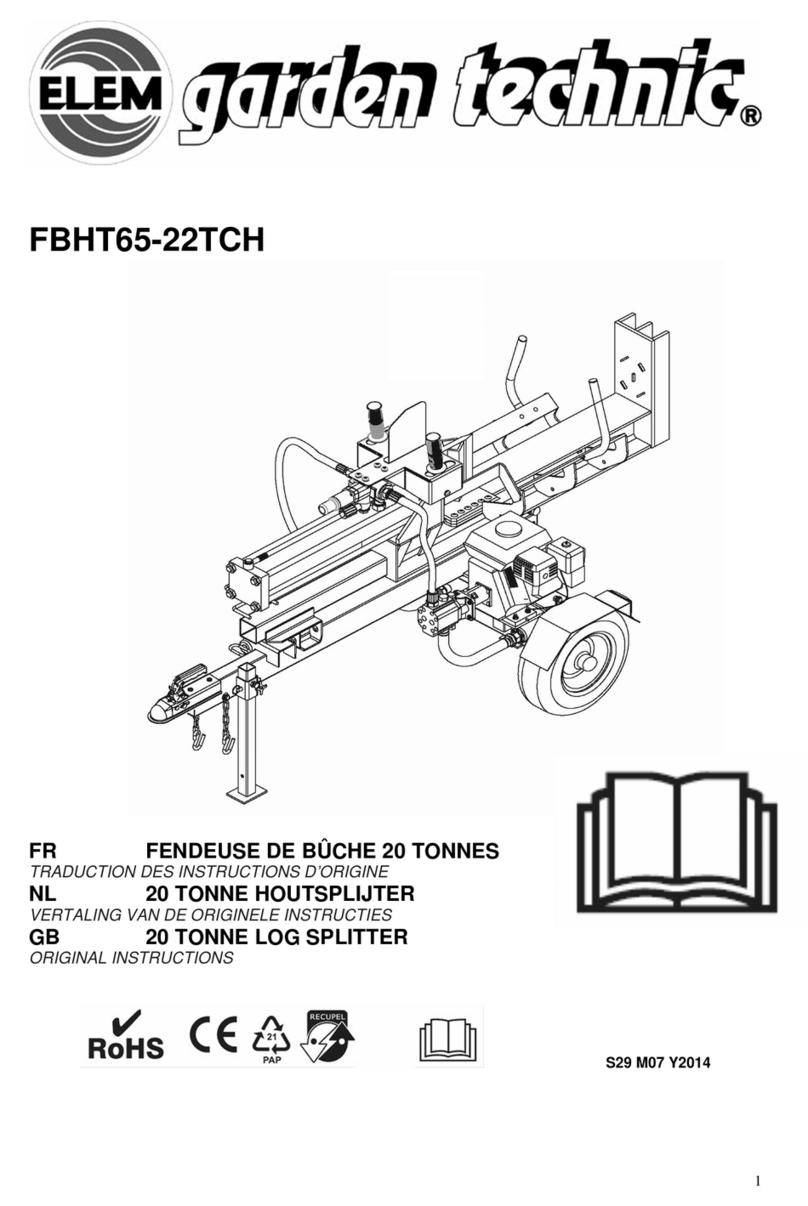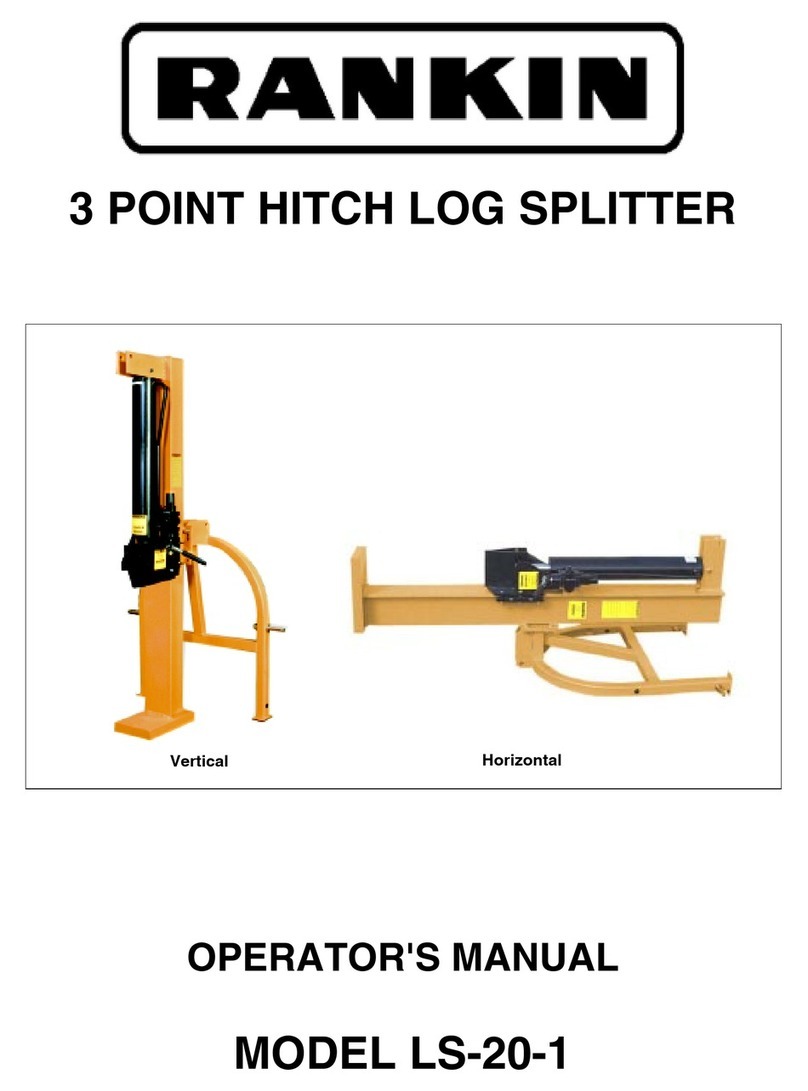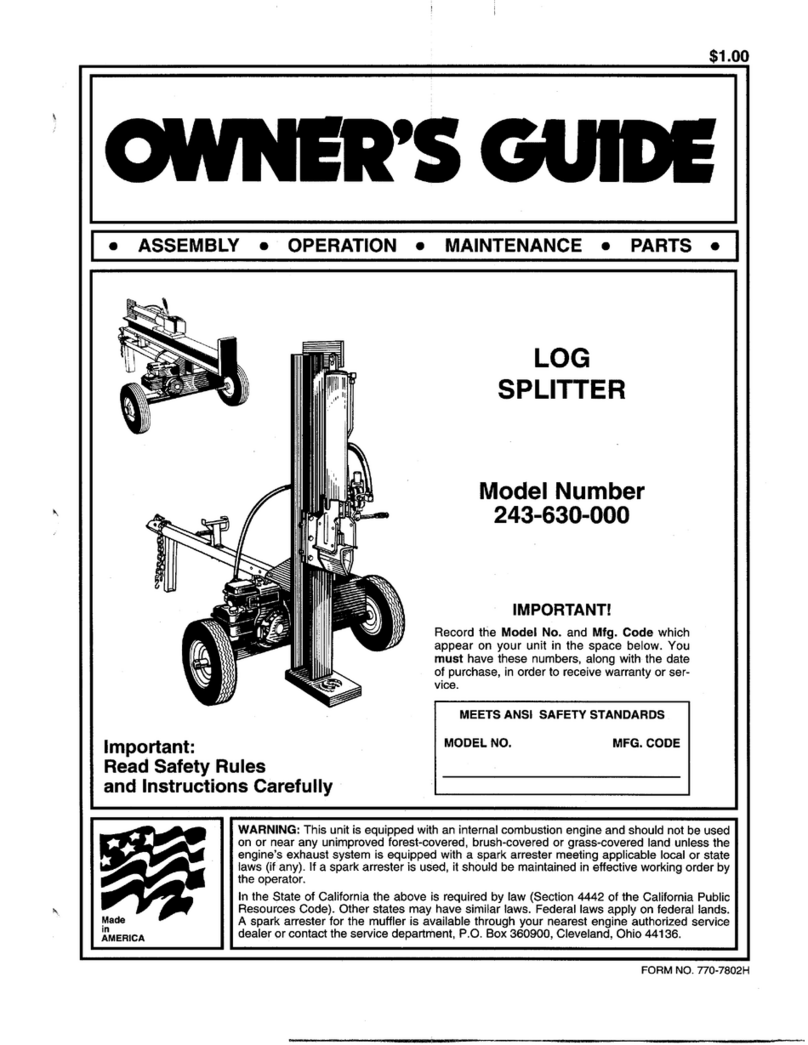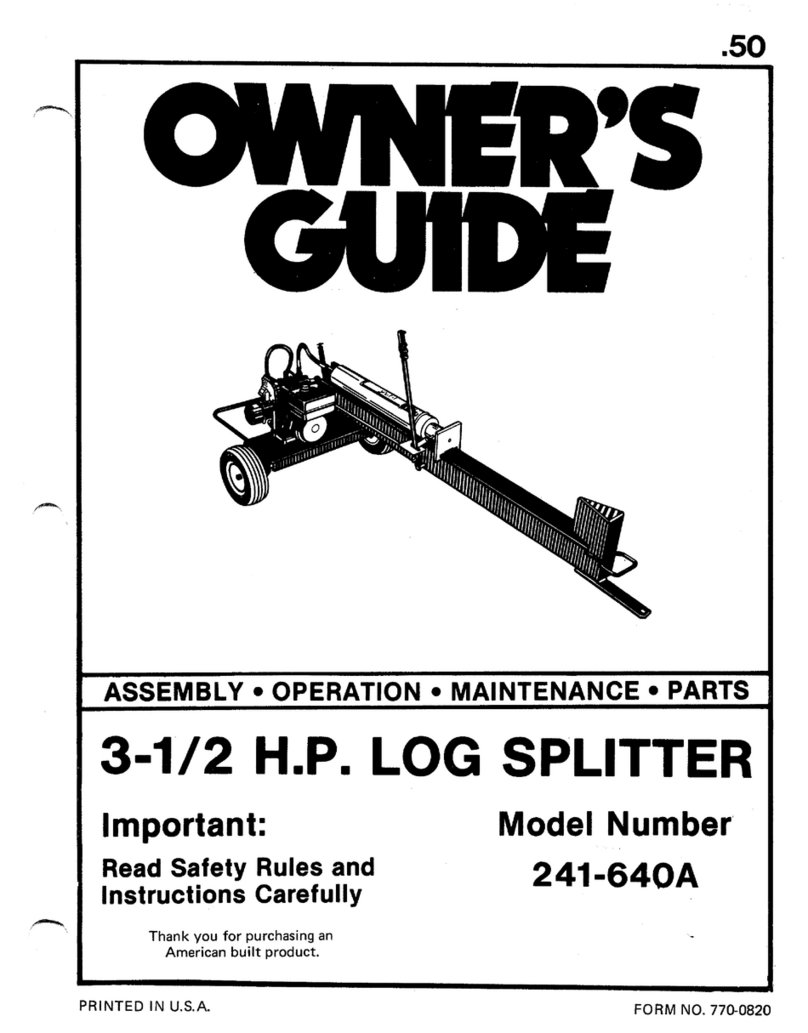Neverattempttosplitwoodsacrossthegrain.
Sometypesofwoodmayburstorflyoutofyour
splitterandresultininjurytoyouorabystander.
Forlogsthatarenotcutsquare,thelongest
portionofthelogshouldberotateddownand
themostsquareendplacedagainstthesplitting
wedge.
Keepyourworkareaclean.Immediately
removesplitwoodaroundyoursplittersothat
youdonotstumbleoverit.Cleanchipsanddirt
offendplate(woodplatform)aftereachlogis
split,orwhenevernecessarytomaintainflat
contactbetweenwoodandendplate(platform).
Nevermovethelogsplitterwhiletheengineis
running.
Neverleaveyourlogsplitterunattendedwiththe
enginerunning.Shutofftheengineifyouare
leavingyoursplitter,evenforashortperiodof
time.Someonecouldaccidentallyactivatethe
splittingwedgeandbeinjured.
Donotrunengineinanenclosedarea.Exhaust
gasescontaincarbonmonoxide.Thisodorless
gascanbedeadlywheninhaled.
Becarefulnottotouchthemufflerafterthe
enginehasbeenrunning.ItwillbeHOT!
Iftheequipmentshouldstarttovibrate
abnormally,stoptheengineandcheck
immediatelyforthecause.Vibrationisgenerally
awarningoftrouble.
Whencleaning,repairingorinspecting,make
certainallmovingpartshavestopped.
Disconnectthesparkplugwireandkeepthe
wireawayfromtheplugtopreventaccidental
starting.
Customer Responsibilities
• Do not operate your splitter in poor mechanical
condition or when in need of repair.
Periodically check that all nuts, bolts, screws,
hose clamps and hydraulic fittings are tight to be
sure equipment is in safe working condition.
Where appropriate, check all safety guards and
shields to be sure they are in the proper position.
Never operate your splitter with safety guards,
shields or other protective features removed.
These safety devices are for your protection.
Replace all damaged or worn parts such as
hydraulic hoses and fittings immediately with
manufacturer approved replacement parts.
Do net change the engine governor settings or
overspeed the engine. This increases the
hazard of personal injury. The maximum engine
speed is preset by the manufacturer and is
within safety limits.
Do not alter your log splitter in any manner such
as attaching a rope or extension to the control
lever or adding to the width or height of the
wedge. Such alterations may cause your splitter
to be unsafe.
Perform all recommended maintenance
procedures before you use your splitter.
Do not service or repair your log splitter without
disconnecting the spark plug wire and moving it
away from the spark plug.
• Never store the equipment with gasoline in the
tank inside of a building where ignition sources
are present, such as hot water and space
heaters, clothes dryers and the like. Allow the
engine to cool before storing in any enclosure.
•Always store gasoline in an approved, tightly
sealed container. Store the container in a cool,
dry place. Do not store in a building where
ignition sources are present.
• To reduce fire hazard, keep engine free of grass,
leaves, wood chips, and excessive grease and
oil.
The hydraulic system of your leg splitter requires
careful inspection, along with the mechanical
parts. Be sure to replace frayed, kinked, or
otherwise damaged hydraulic components.
• Fluid escaping from a very small hole can be
almost invisible. Do not check for leaks with your
hand. Escaping fluid under pressure can have
sufficient force to penetrate skin, causing
serious personal injury. Leaks can be located by
passing a piece of cardboard or wood over the
suspected leak and looking for discoloration.
Should it become necessary to loosen or
remove any hydraulic fitting or line, be sure to
relieve all pressure by shutting off the engine
and moving the control handle back and forth
several times.
• Do not remove the cap from the hydraulic tank or
reservoir while your log splitter is running. Hot oil
under pressure could cause injury.
• The pressure relief valve on your splitter is
preset at the factory. Do not adjust the valve.
Only a qualified service technician should
perform this adjustment.
• Completely drain fuel tank prior to storage. This
guards against accumulation of fuel fumes
which could result in a fire hazard.
• Never store log splitter outside without a
waterproof cover. Rain will cause rust on the
inside of the cylinder.
Important Information
Always:
Use clean fluid and check fluid level regularly.
Use Dexron Ill Automatic Transmission Fluid or
lOW non-foaming hydraulic fluid.
Use a filter (clean or replace regularly).
Use a breather cap on fluid reservoir.
5
